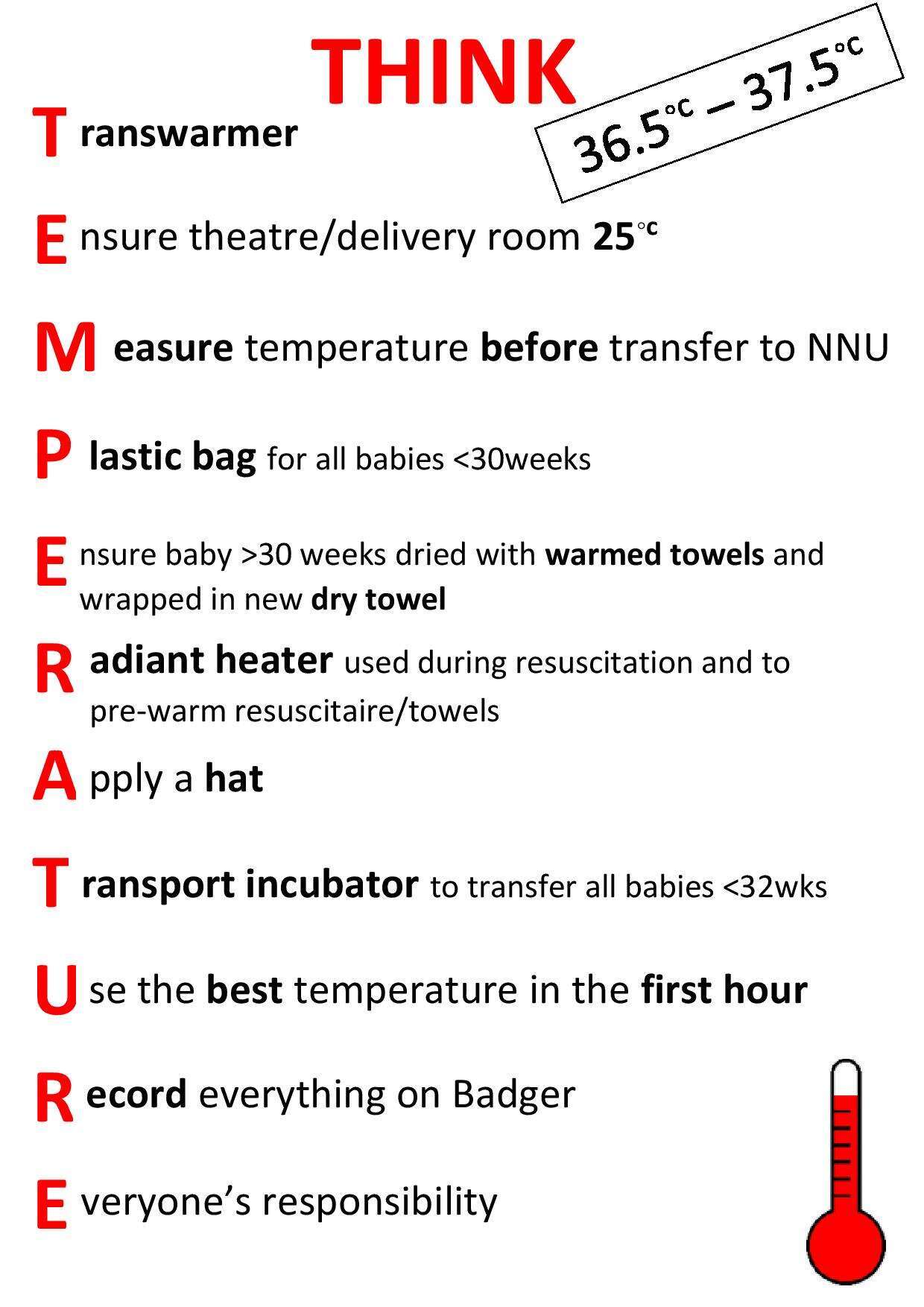
Improving Hypothermia in Preterm Infants at Admission to a Tertiary Neonatal Unit- a Quality Improvement Project
Background: Hypothermia in preterm infants is associated with increased morbidity and mortality. The National Neonatal Audit Programme (NNAP) recommends temperature between 36.5-37.5˚C at admission to the neonatal unit (NNU) for babies <32weeks gestation. Our tertiary NNU was a national outlier for this NNAP measure for two consecutive years.
Objective: To improve rates of normothermia at admission for infants <32 weeks.
Methods: A baseline audit was conducted on infants born <32 weeks to ascertain areas for improvement. Incomplete documentation of thermal-control measures, variable theatre temperature, procedures at delivery and mode of transportation were linked with hypothermia. A quality improvement (QI) initiative was implemented, raising staff awareness about the importance of euthermia. Posters (Fig 1) highlighting good practice were displayed around NNU. A prospective audit was conducted between Dec18-Feb19.
Results: 21 babies included in the audit had a mean gestation of 28+5weeks (23-31+3weeks) and birth-weight of 1150g (500g-1790g). All had temperature measured after admission and 62% were normothermic, 5(24%) were hypothermic and 3(14%) were hyperthermic. 18(86%) had their temperature measured in delivery suite. 16(76%) used the transport incubator and 15(72%) transwarmers. Of the 5 hypothermic babies, 3 were hypothermic in delivery-suite. 4 babies were hyperthermic before transfer and 3 remained hyperthermic. Only 37% of babies born in theatre compared to 75% of babies born in delivery rooms were normothermic at admission. 4 of the 5 hypothermic babies were born in theatre (mean theatre temperature 23˚C). Time of birth and transfer time to NNU did not influence the admission temperature.
Conclusions: Following the QI, rates of normothermia at admission improved from 52% to 62%. QI highlighted importance of establishing normothermia before transfer to facilitate normothermia at admission and hence the importance of actively measuring the temperature early during stabilisation and adjusting accordingly. Monitoring theatre temperature will be part of our continuous QI project.

Powered by Eventact EMS